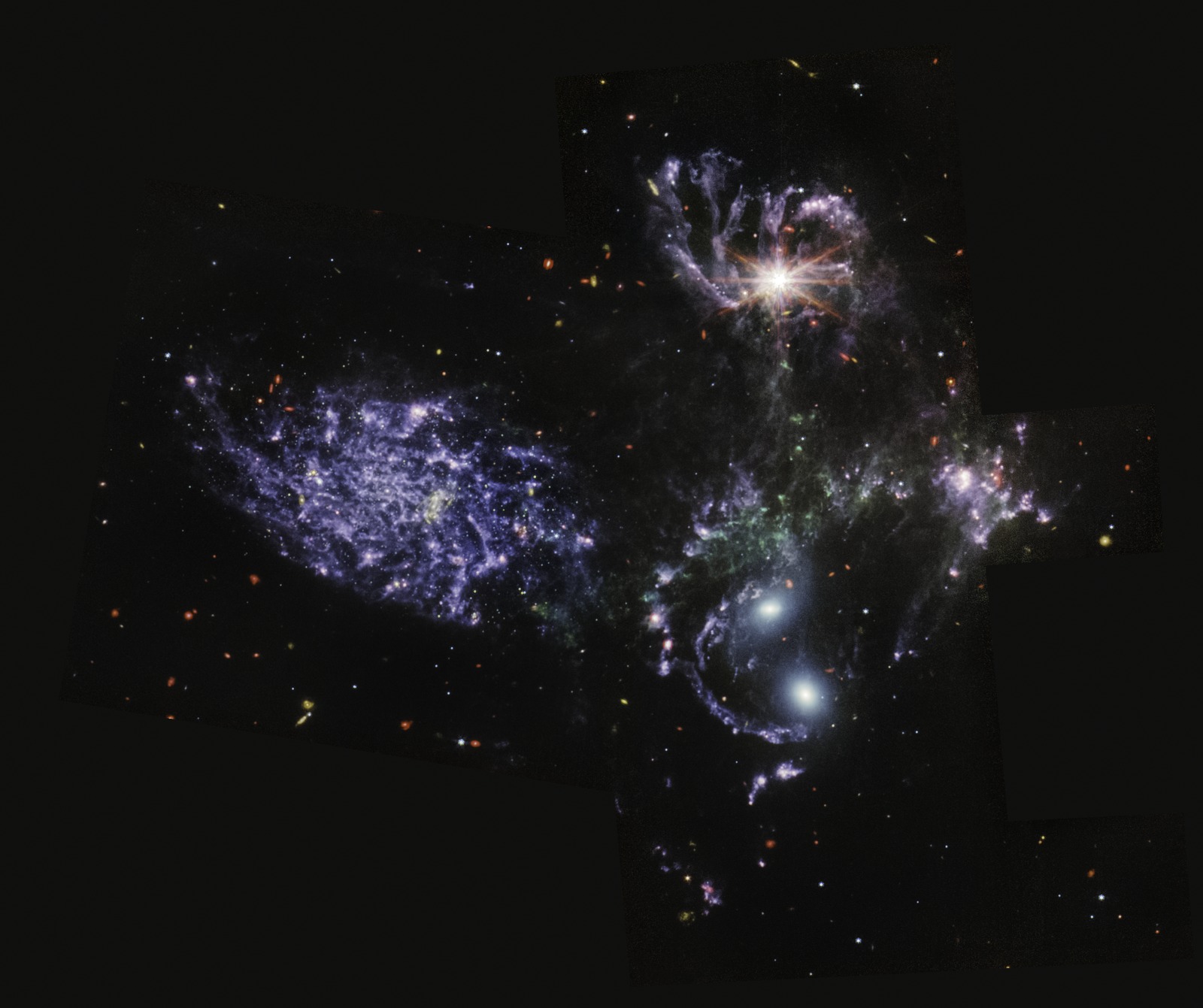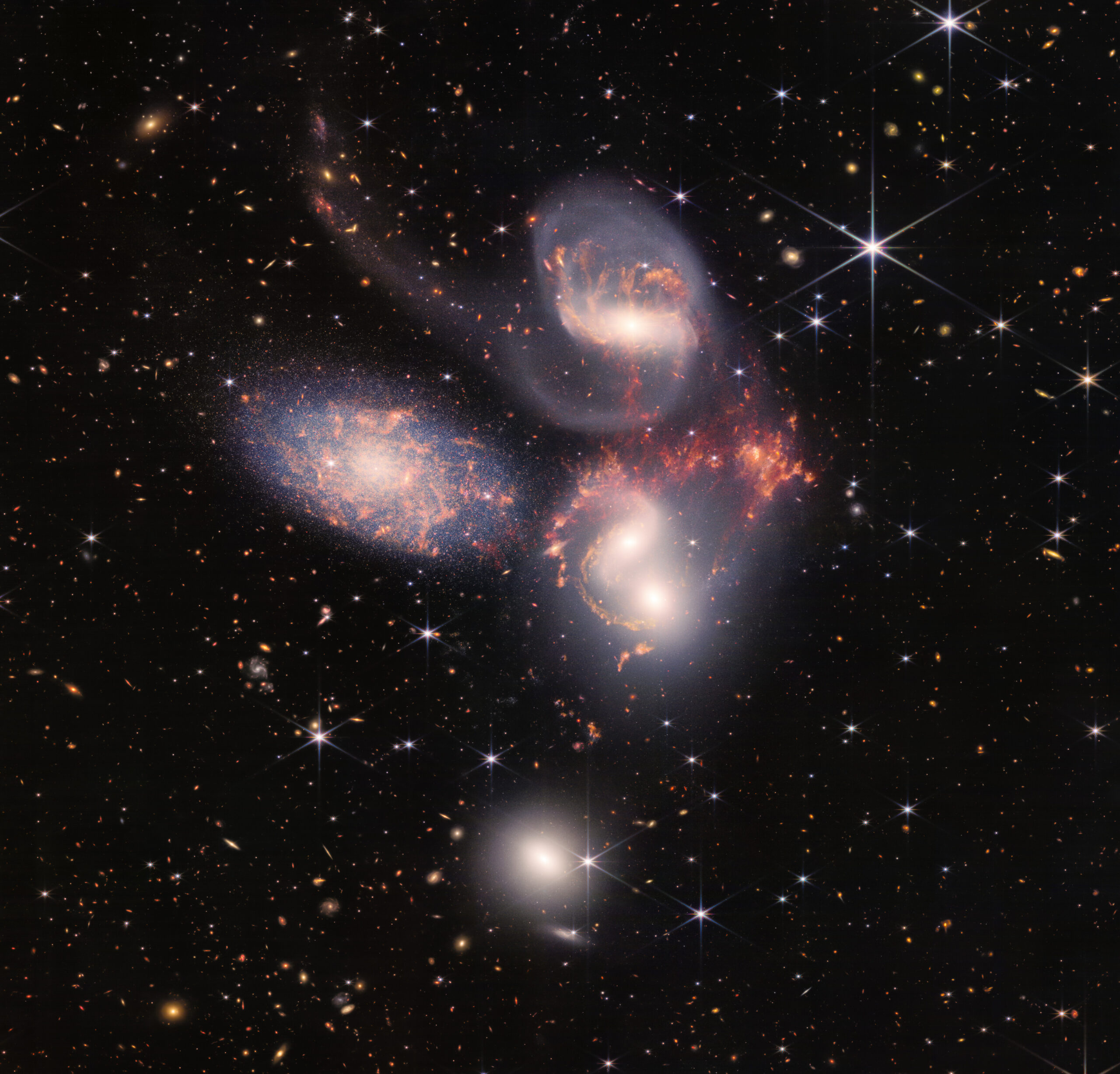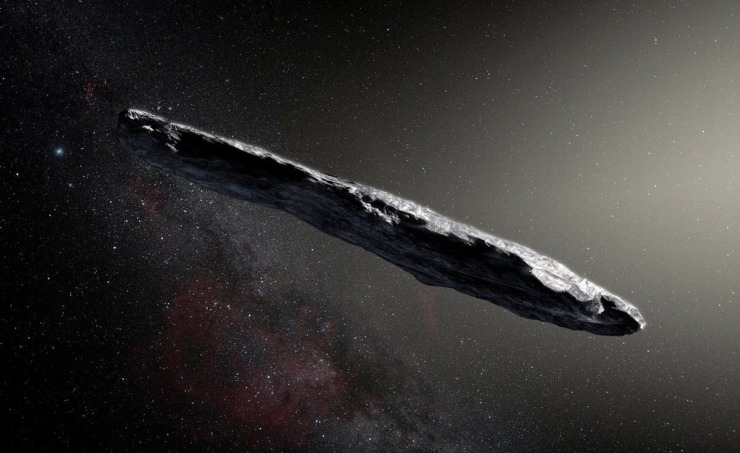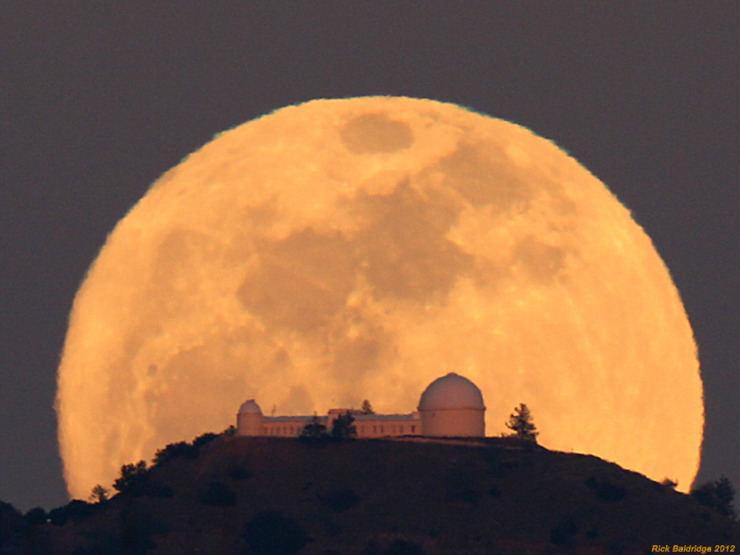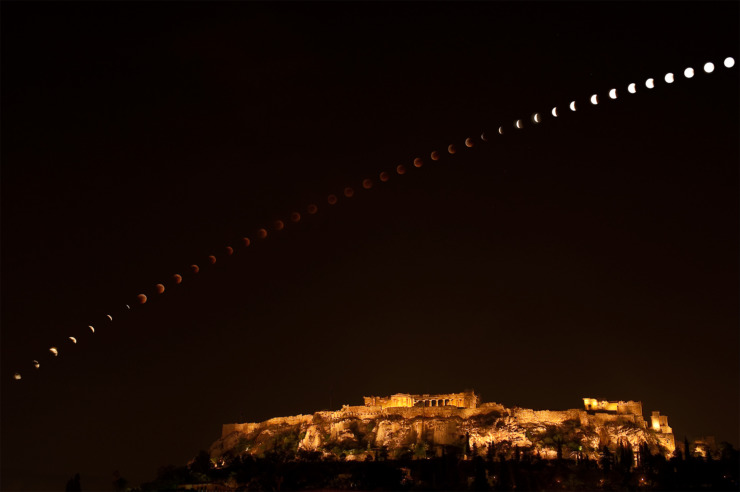We are looking at a brand new picture of five galaxies (islands of billions of stars), four of which actually hang out in space together. The fifth one, the one to the left, is actually in the foreground — it is 39 million light-years from us, while the other four are about 300 million light-years away. The whole group is known as Stephan’s Quintet, after French astronomer Edouard Stephan, who first pointed them out in 1877, but had no clue about their distances. Like all the James Webb Telescope images, this is taken in infrared light (heat rays, and not visible light) and shows things our eyes cannot see.
In the first picture, which records what middle range of infrared waves can show, you see streams of warm material going between the galaxies on the right. Because they are close to each other, the galaxies can pull material out of each other and exchange it, leading to the long trails of material you see between them. You can also see that the galaxy at the top has a brilliant point of energy at its center. This is a monster black hole, containing enough material to make 24 million Suns! We can see it glow because it is “eating away” at the center of its galaxy, and the “victim” material it is pulling in is glowing with heat just before it falls into the black hole. (A smaller version of this sort of hungry black hole has been found in the center of our Milky Way Galaxy too.)
Our second picture shows the same group of galaxies with a wider range of infrared light. So you get to see more of the contents of each galaxy, including a lot of the dust mixed with gas that looks reddish on this false color image. On this picture, you can see even more distinctly how the two galaxies in the middle right are interacting and will eventually merge. Astronomers have good evidence that many of the large galaxies of stars we see today formed through the merger of smaller galaxies over vast periods of cosmic time.
As the two galaxies in the middle of the quartet orbit each other closer and closer, vast tongues of stars and dust are flung out of the pair, and can be seen as reddish structure above and to the right of them. The James Webb Telescope will enable astronomers to measure just how much material (and what kind of material) is lost when galaxies interact.
Special Note: How to Get Into the Webb Pictures
On my Windows computer, if I right-click on the images, I have the option to open them in a new browser tab and can see even more beautiful detail. If you want to download the new Webb images for yourself in the familiar jpg (or jpeg) image format, a good place to find them is at the European Space Agency site: https://esawebb.org/images/ If you’d like to compare the Webb images to Hubble images of the same object, you can use the sliders at: https://www.webbcompare.com/

